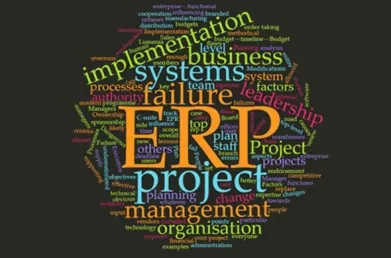3 Tips for Successful IT Projects in the Public Sector
The pace of IT project delivery in the public sector can feel slow and frustrating at times, particularly compared to similar projects in the private sector. Every organisation and every project is different, of course, but many would agree there's at least some truth in this observation.
For consultants and project managers venturing into state-owned clients for the first time, this article provides some words of advice to help smooth the transition. Take these into account during the planning stage of the project and you should have fewer surprises.
Tip #1 - Political priorities change like the wind
Public bodies aren't run by politicians. The policies, priorities and budgets that drive them, however, are absolutely dictated by the government of the day. This can make for uncertain project environments. Are we heading into an election year? Are government ministers pushing for strategic transformation or are they looking for quick wins to boost their image? What campaign promises were made?
Questions like these have a real impact on internal decision-making. The focus of internal leadership teams is forced to change with that of the government, and the resulting lack of commitment can erode any sense of accountability and ownership for project benefits. Technology projects may simply be deprioritised or dropped, no matter how important or successful they might have been.
See also Understanding OJEU procurement procedures
Secure leadership support as early as possible and try to ensure that funding for the entire project is locked down from the outset. Push for regular access to your senior stakeholders so they can't lose sight of the project benefits. And if the project is ditched for political reasons, don't take it personally!
Tip #2 - Don't underestimate the pain of public procurement
Public procurement processes are crucial for driving transparency, fairness and value in how taxpayer money is spent. Important as those processes are, they slow projects down. They can be incredibly onerous, not just for project teams preparing tender documents, evaluating responses and attending software demos, but for technology vendors and service providers investing their time and money to be in with a chance.

It's vital to understand the relevant national and EU public procurement rules, and to factor these into your project plan from the outset. You may need to prepare for a lengthy selection and contract negotiation process, even if you had a preferred technology supplier in mind from the outset.
Following the right process may well add months to your timeline, but failing to do so can land you and your client in seriously hot water.
Tip #3 - Prepare to be culture-shocked
Government organisations are not businesses. The terms turnover and profit don't apply. They don’t have customers or clients in the traditional sense. Leadership teams don't have the same mandate to decide organisational strategy and direction as their private sector counterparts. Members of the public and media have a right – and a tendency – to seek access to information and to challenge spending, no matter how disruptive that may be. Fundamentally, these are different beasts with different cultural dynamics.
So, what does this mean? Despite the intense public scrutiny, it tends to mean more bureaucracy and more waste. You're likely to see more paper, more meetings, more governance layers and - in my view - more inefficiency than elsewhere. There can be numerous governance groups, architecture boards and finance committees to navigate, each expecting a slightly different set of project reports on a slightly different schedule. Decisions are often made by consensus, which can be painstakingly slow, and once made they still tend to be revisited. Again. And again.
It all comes back to planning. Allow time for chasing stakeholders, for composing memos to formalise decisions, and for getting physical signatures on paper. Plan for delays, include contingency, and keep a stress-ball at hand!
Conclusion
The wheels of government turn slowly. You need all the usual project disciplines, and a hefty dose of patience and perseverance. Public bodies can be politically charged, with very different drivers, influences and obstacles to the private sector.
To achieve project success you need to build more time into your project plan than you would elsewhere. It's almost guaranteed to take longer than you'd expect to jump through the public funding and governance hoops, and to get the decisions you need. And just keep your fingers crossed that political priorities – and technology trends – don't change in the meantime!
When you plan accordingly, and the stars align, it's worth it!
This blog was written by Edward Abrahamson, Principal Consultant at Lumenia. For further information please send an email to Edward Abrahamson.


